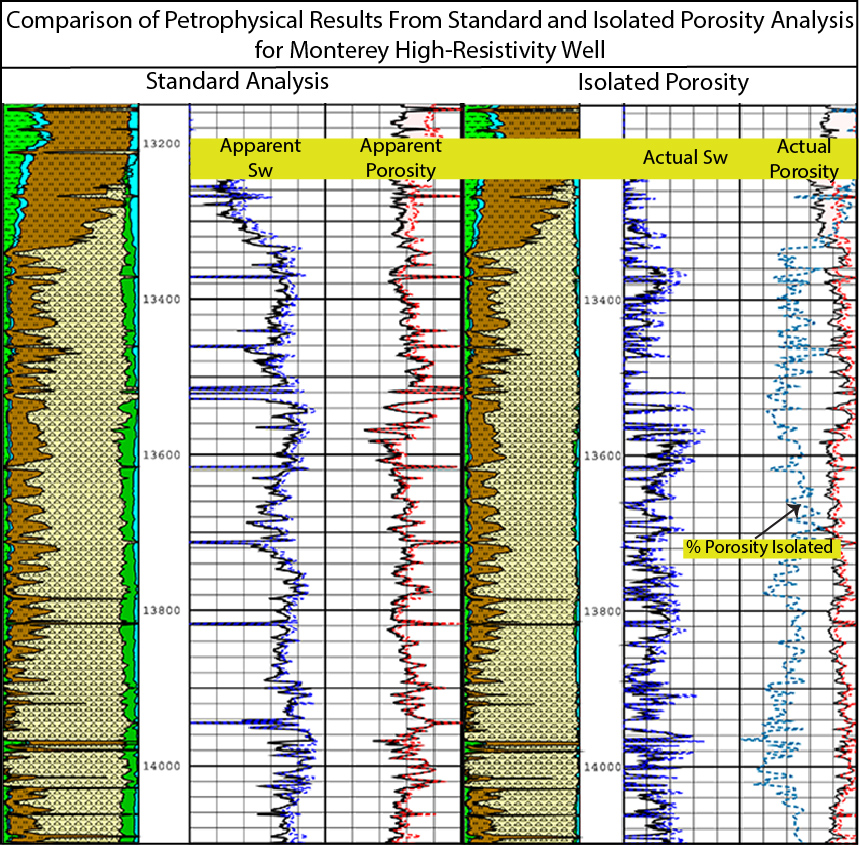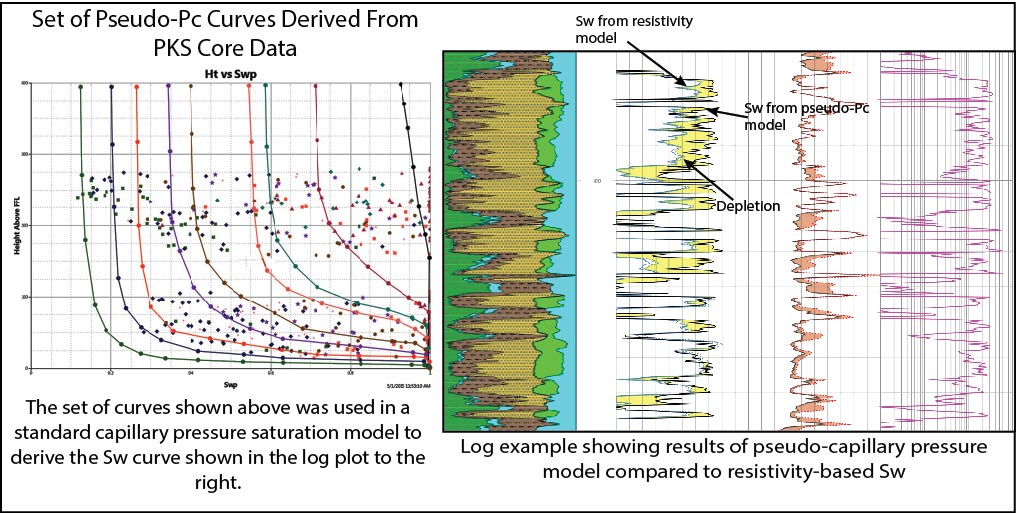
Current Research and Presentations
We discover and resolve technical problems in almost every project, but for many of these client confidentiality prevents us from publishing the results. Results we can publish are summarized here, with links to more information.
High-Resistivity Monterey Shales That May Not Be Pay
Deriving Pseudo-Capillary Pressure Curves From PKS Data in Heavy Oil Reservoirs
High-Resistivity Monterey Shales That May Not Be Pay
We developed one of the first petrophysical models for siliceous Monterey shales that provided accurate reservoir properties, and have been improving this model for over 30 years. A particular highly siliceous facies in quartz phase is present in many areas of the San Joaquin Valley that is characterized by high resistivity and high log porosity. Our standard analysis model shows that these rocks contain significant hydrocarbons, yet mudlog shows and production responses sometimes are poor. After working with data from a number of wells and fields, we concluded that, in intervals with disappointing shows or tests, much of the porosity in the rocks is isolated from the fluid system, either by kerogen or diagenetic alteration. Recent research in Monterey rocks by others confirms this conclusion. We modified our Monterey model to account for the isolated porosity in calculating reservoir porosity and water saturation, and also to distinguish between zones that are likely to produce economically and those that probably will not. We presented our research on this topic at local section meetings and at the Pacific Section AAPG meeting in 2014.
NOTE: We recently recognized that this same concept of isolated porosity was the answer for a sandstone that had become partially plugged with degraded oil (bitumen) due to exposure at some point in its geologic history. This rock was also characterized by very high resistivity from which a very low Sw was calculated, an Sw that was not consistent with the complete lack of free oil. By applying the same model to this reservoir as we had developed for the siliceous shales, we calculated reservoir properties which were in very close agreement with core data, mud log data, and production records.
PSAAPG version of presentation SPWLA version of presentation

Deriving Pseudo-Capillary Pressure Curves From PKS Data in Heavy Oil Reservoirs
For estimation of OOIP, original saturation is needed. In some older reservoirs, wells with logs suitable for analysis may not have been run until long after the field started production and no longer record conditions at discovery. Or, for fields initially developed in the 1960's or before, logging suites may lack valid porosity logs. Obtaining Sw from capillary pressure data is our usual approach to this problem, but in many heavy oil fields capillary pressure measurements were never made, and core material may not be available to test. We were asked to calculate original Sw in two such fields which had no capillary pressure data but which did have abundant standard PKS core analysis. We could calculate accurate clay volume and porosity from the log data and also were able to derive a representative permeability transform. Capillary pressure curves are usually referenced to sample porosity and air permeability, and measure the change in saturation of a non-wetting fluid with increasing displacement pressure. Displacement pressure can be converted to height above the Free Fluid Interface as a function of the rock and fluid properties. Standard PKS core data represents fluid saturation and permeability at some depth level in the reservoir, which is easily converted to height with knowledge of the oil/water contact elevation. Therefore, the information needed for constructing psuedo-capillary pressure curves exists in the PKS core dataset. We derived a set of pseudo-cP curves from core data for two different heavy-oil reservoirs and successfully applied the resultling model to calculate Sw in the same way as laboratory cP measurements would be used. The pseudo-capillary pressure transforms can then be integrated with our "E-Log Only" model to generate a pool or field-wide characterization of the original reservoir.
The results of this work were presented at the PSAAPG convention in 2015.

